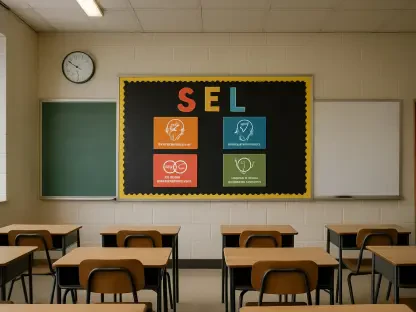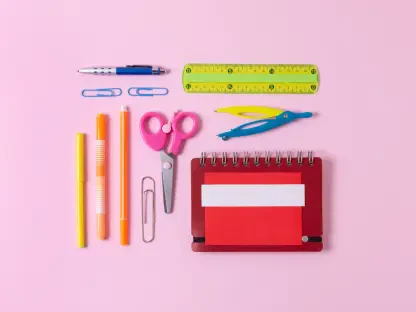The education landscape is evolving rapidly with the introduction of artificial intelligence (AI). As the technology becomes more sophisticated, its potential to transform classrooms becomes increasingly apparent. From fostering creativity to enhancing personalized learning experiences, AI has the power to revolutionize how students engage with content and develop crucial skills for the future. Educators have long struggled with tailoring education to individual needs due to the rigidity of standardized curricula and assessments. With AI’s rise, a more customized approach to education is not just possible but increasingly practical, promising a paradigm shift in teaching and learning.
Personalized Learning and Creativity
For years, educators have aimed to tailor learning experiences to individual student needs. Traditional methods have often struggled with this goal due to the rigidity of standard curricula and assessments. AI changes this by delivering personalized content at just the right time and in the right way. However, AI’s impact extends beyond mere content delivery, enabling students to express their understanding and creativity in diverse ways. This newfound flexibility allows students to explore subjects deeply while using methods that best suit their unique learning styles, thus making the process of education itself more engaging and effective.
AI allows educators to shift from uniform assignments to projects that reflect individual student creativity. For example, instead of a standard essay, a student might design a historical propaganda poster, blending academic learning with creative tasks. This approach, rooted in the belief that creativity is integral to learning, ensures unique student outputs, fostering ownership and creativity. AI streamlines this shift, making creative projects feasible within existing educational constraints. Furthermore, by reducing the time teachers spend on administrative tasks, AI enables educators to focus more on curriculum development and individualized student attention, thus improving the overall quality of education.
Supporting Individual Strengths
One of the most significant advantages AI offers in education is its ability to amplify individual student strengths and preferences. By enabling multiple avenues for students to demonstrate their knowledge, AI moves away from standardized assignments, making learning more engaging and personalized. This ensures that each student’s work is unique, boosting both creativity and a sense of ownership over their learning process. As a result, students are more likely to remain engaged and motivated, which can lead to improved academic performance and a deeper understanding of the material they are studying.
Brian Johnsrud of Adobe highlights the shift toward projects that mirror each student’s creativity. This not only makes assignments more interesting but also ingrains the connection between creativity and academic learning. For instance, a history lesson might involve a creative project like designing artifacts or propaganda, blending historical knowledge with creative expression. AI tools facilitate these assignments, reducing preparation time and making creative tasks practical within standard curricula. In addition to promoting creativity, this individualized approach can also help students develop critical thinking skills and the ability to apply knowledge in innovative ways, both of which are invaluable in today’s ever-changing job market.
Safe and Responsible AI Integration
As AI becomes more integrated into educational settings, safety and responsibility are paramount. Johnsrud stresses the need for AI tools to be explicitly designed for educational purposes, incorporating essential pedagogical elements, accessibility features, and technology integrations. Ensuring that AI tools respect intellectual property and creative integrity is crucial; student and teacher-produced content should not train AI models. Schools and educational institutions must be vigilant in their selection of AI tools to ensure that these technologies enhance the learning experience without compromising student or teacher rights.
Responsible AI integration also involves protecting creative work rights. To be effective, AI tools must include accessibility features, making them suitable for diverse classroom environments. Educators must be cautious about which tools they adopt, prioritizing those designed with educational contexts in mind to ensure both safety and efficacy. This means that AI tools must not only be user-friendly but also adhere to ethical standards that protect all users. By incorporating these considerations, schools can ensure that AI becomes a beneficial addition to the academic environment, fostering both trust and innovation.
Enhancing the Creative Process
AI’s role in the creative process extends beyond merely assisting with tasks. It can help students at various stages, from idea generation to refining their work. This alleviates the intimidation of starting with a blank canvas, transforming it into an opportunity for exploration. By acting as a thought partner, AI demystifies creativity, helping students overcome blocks and articulate their ideas more effectively. This can be particularly beneficial for students who might struggle with traditional, linear approaches to problem-solving, allowing them to explore alternative methods and pathways to understanding.
AI tools are evolving from basic prompt-and-result models to integral creative workflow components. This helps students articulate their thoughts more effectively, resulting in content that is both creative and personal. Teachers benefit, too, as they can discern each student’s unique voice within their work, making personalized learning a reality. By acting as facilitators rather than just dispensers of knowledge, educators can create a more dynamic and interactive classroom environment, which can significantly enhance student engagement and learning outcomes. This dual benefit, impacting both students and teachers, underscores the transformative potential of AI in education.
Preparing for the Future Job Market
In today’s job market, AI literacy and creative thinking are increasingly critical. AI skills have become essential, with industry leaders preferring candidates who possess these competencies. A recent report indicates that the majority of leaders would not hire someone without AI skills, and they even favor less experienced candidates with AI proficiency over more seasoned individuals lacking these skills. This trend emphasizes the need for students to develop AI competencies to stay competitive. Schools must, therefore, prioritize AI education as part of their curriculum to ensure students are well-equipped for future challenges.
Creativity remains equally important. According to the World Economic Forum, creative thinking is among the top future skills. The rise of the creator economy further underscores this need, with a plethora of job opportunities heavily relying on creativity. Students with a combination of AI skills and creative problem-solving capabilities are thus well-positioned to thrive in this evolving landscape. By fostering these skills, educational institutions can help students become versatile and adaptable professionals, capable of navigating the complexities of a rapidly changing job market.
The Impact on Student Engagement and Learning Outcomes
The education landscape is shifting rapidly with the advent of artificial intelligence (AI). As AI technology advances, its potential to reshape classrooms becomes more evident. AI has the power to revolutionize how students interact with educational content and develop essential skills for the future, offering new ways to foster creativity and tailor learning experiences to individual needs. Traditionally, educators have faced challenges in personalizing education due to the inflexible nature of standardized curricula and assessments. However, the rise of AI presents an opportunity for a more customized and dynamic approach to education. This technology enables the creation of personalized learning paths, adapting to each student’s strengths and weaknesses, thereby making education more effective and engaging. AI-driven tools can provide real-time feedback, helping students understand their progress and areas needing improvement. Moreover, AI can handle administrative tasks, giving teachers more time to focus on the human aspects of teaching. In essence, AI holds the promise of a transformative shift in teaching and learning, moving towards an era where education is more tailored, efficient, and responsive to individual needs.









